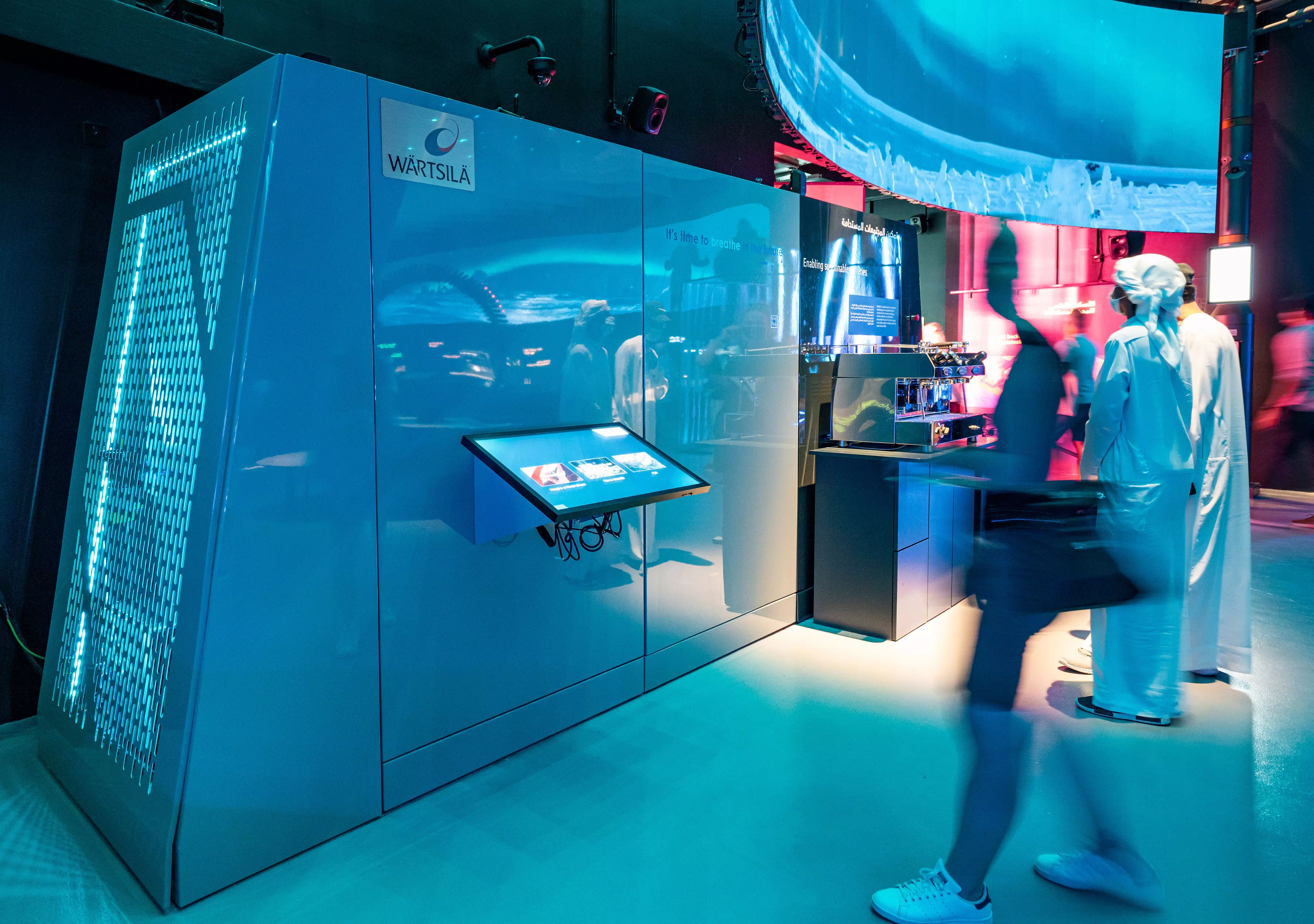Frequently asked questions about Direct Air Capture
Direct air capture is a technology that uses chemical materials to capture carbon dioxide or CO2 directly from the atmosphere. The CO2 can be permanently stored in deep geological formations (thereby achieving negative emissions or carbon removal) or it can be used, for example in food processing or combined with hydrogen to produce synthetic fuels.
Direct Air Capture.
Carbon Capture, Utilization and Storage, or CCUS, is an important emissions reduction technology that can be applied across the energy system. This involves the capture of carbon dioxide or CO2 from air or from industrial processes, the transport of this CO2 via ship or pipeline, and either its use as a resource or its permanent storage deep underground in geological formations. CCUS technologies provide the foundation for carbon removal or “negative emissions” when the CO2 comes directly from the atmosphere.
There are currently 19 direct air capture (DAC) plants operating worldwide, capturing more than 0.01 Mt CO2/year.
Today, there exist two types of technology approaches for capturing CO2 from the air: liquid and solid DAC. Liquid DAC systems pass air through chemical solutions, which remove the CO2. The system reintegrates the chemicals back into the process by applying high-temperature heat while returning the rest of the air to the environment. Solid DAC systems make use of solid sorbent filters that chemically bind with CO2. When the filters are heated and placed under a vacuum, they release the concentrated CO2, which is then captured for storage or use.
The CO2 can be permanently stored in deep geological formations (thereby achieving negative emissions or carbon removal) or it can be used, for example in food processing or combined with hydrogen to produce synthetic fuels.
There are some nature-based solutions such as afforestation, reforestation, and restoration of coastal and marine habitats. Other nature-based solution includes measures to enhance naturally occurring processes for example land management approaches to increase the carbon content in the soil, biochar, etc.
The CO2 in the atmosphere is much more dilute than in point sources for example flue gas from a power station or a cement plant. This contributes to DAC’s higher energy needs and costs relative to other CO2 capture technologies and applications.
Limited land and water footprint and the viability of locating plants on non-arable land close to suitable storage, eliminating the need for long-distance CO2 transport.
Direct air capture is one of few technology options available to remove CO2 from the atmosphere. The amount of CO2 released can be made equivalent to the amount being removed. Since certain sectors such as aviation and heavy industry are difficult to decarbonize, carbon removal technologies can offset their emissions and support a faster transition.
Companies that capture carbon dioxide from the air or process CO2 are:
Climeworks, Soletair Power, Carbon Engineering Ltd, Carbfix, Charm Industrial, Global Thermostat, Verdox, Breakthrough Energy, Carbonbuilt, Project Vesta, Oxy Low Carbon, 44.01, AirCompany, Circular Carbon Network, Kiverdi Carbon Transformation, Carbon Clean, LanzaTech, Inc., Made of Air, Neustark, Opus 12 – Twelve, Zenid, Nautilus Labs, AirCapture, Carbominer, Carbon Collect or mechanical trees, Carbon Infinity, Carbonquest, Carbyon, Aker Carbon Capture, Heirloom, Hydrocell, Infinitree, Metafuels, Mission Zero Technologies, Noya.co, RepAir Carbon Capture, Seamach Energy, Skytree, Sustaera, Susteon, TerraFixing, Climate Robotics, Ebb Carbon, Newlight Technologies, Planetary Hydrogen, Aclima.
Finnish company Soletair Power develops modular Direct Air Capture solutions that can be installed in buildings’ HVAC systems or be placed in a very confined space enabling any company to capture carbon dioxide from the air. Another Finnish company Solar Foods uses a process to create protein from their captured carbon dioxide, yielding a powder that can be an ingredient in other food products. Climeworks, Carbon Engineering, Soletair Power, Global Thermostat, Prometheus Fuels, and Carbfix – are some of the notable carbon capture companies in the world.
According to the scientific literature, Direct Air Carbon Capture and Storage (DACCS) is a complementary technology to other negative emission approaches, such as bioenergy with carbon capture & storage and afforestation. The benefits of DACCS include its ability to capture the CO₂ produced by distributed sources, it’s modular, and it doesn’t have major water and land interactions. DAC’s scalability is currently the key factor limiting its deployment.
DAC technologies extract CO₂ directly from the atmosphere. Several technologies are available today: Liquid absorption systems pass air through chemical solutions (e.g. hydroxide solutions). Solid sorbent systems use filters that chemically bind CO₂. When the solutions or filters are heated, they release the concentrated CO₂. Electrochemically-based technologies use electrical energy to generate chemical reactions that separate CO₂ from the air.
Each and every one of us should pay for it because naturally, we will all benefit from the positive impact on the environment. Governments around the world now see carbon capture as an industrial opportunity and are developing a commercial value chain to drive costs down. They are also developing regulations, incentive programs, carbon taxes and trade to make direct air capture of carbon dioxide an economically viable solution.
GET IN TOUCH





Permalink